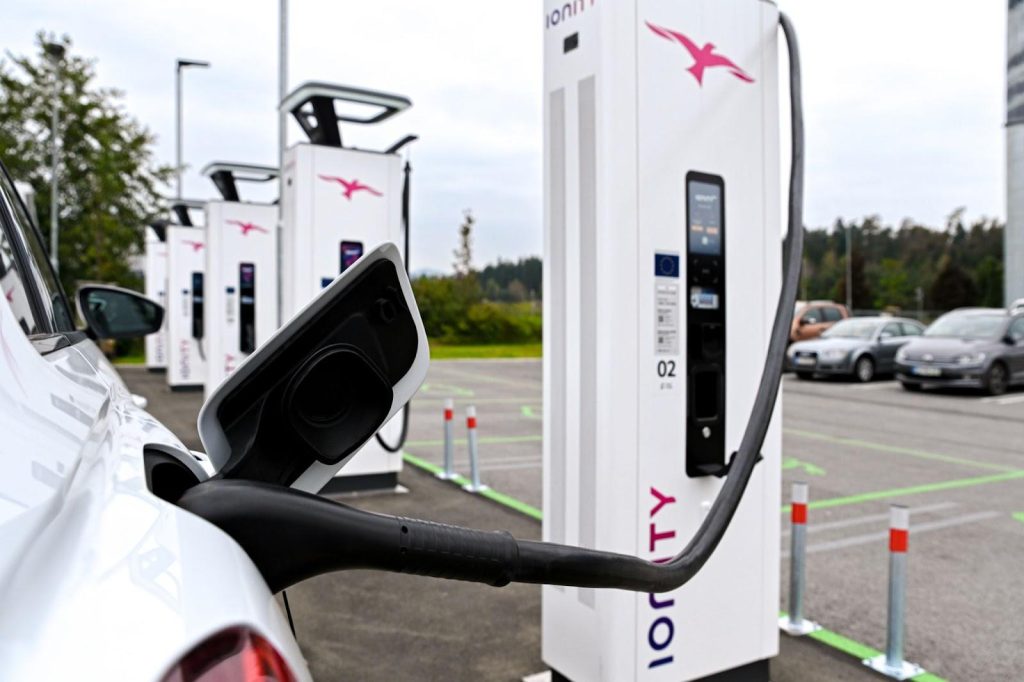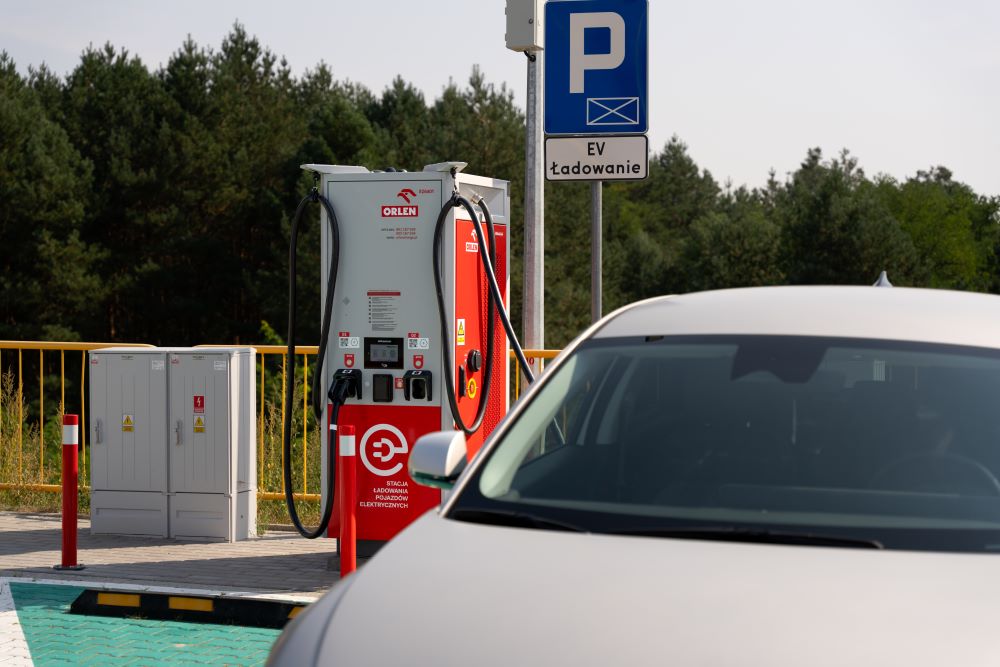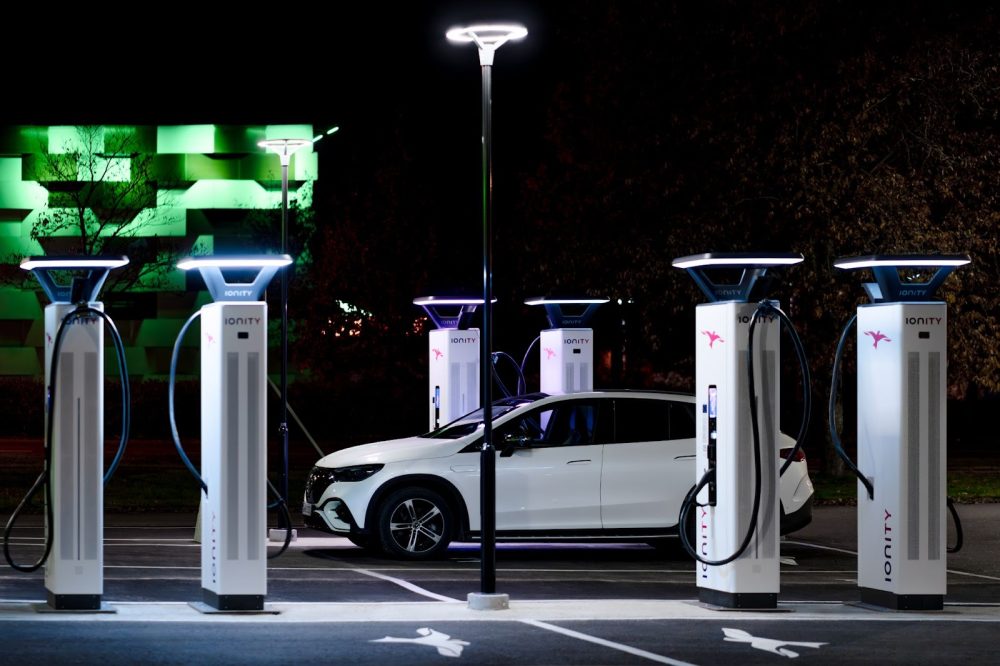As electric vehicles (EVs) continue to surge in popularity across Europe, with countries like Norway and the Netherlands leading the charge, the need for proper charging etiquette has never been more crucial.
Whether you're charging in the bustling streets of Paris, at a motorway service station in Germany, or at your workplace in Stockholm, following these etiquette guidelines will ensure a smooth, efficient, and harmonious experience for all EV users.
1. Use the Appropriate EV Charger for Your Vehicle
If you drive a vehicle that charges at a maximum of 50 kW, there's no need to occupy a powerful EV charger like Axon Easy 400. Not only will your car not charge any faster, but you'll also potentially inconvenience drivers of vehicles capable of higher charging speeds.
For instance, if you're driving a Renault Zoe with a maximum DC charging rate of 50 kW, opt for a 50 kW charger instead of a high-powered one that could be used by a Porsche Taycan or an Audi e-tron GT. This consideration is especially important at busy charging hubs along European motorways, where a mix of vehicle types and charging speeds is common.
2. Don't Overstay Your Welcome
One of the cardinal rules of EV charging etiquette is to move your vehicle promptly once charging is complete. Most EVs charge most efficiently up to about 80% capacity. Beyond this point, charging speeds typically slow down significantly.
For example, a Volkswagen ID.3 might charge from 10% to 80% in about 30 minutes on a fast charger, but the final 20% could take an additional 20-30 minutes. Unless you absolutely need that extra range for your journey, it's considerate to unplug and move your vehicle once you reach 80%, especially if others are waiting.
Many charging networks in Europe, such as IONITY or Fastned, have started implementing idle fees to discourage drivers from leaving their vehicles plugged in after charging is complete. Be aware of these policies and respect the time limits to avoid extra costs and allow fellow electric car drivers to use the charger.
3. Never Unplug Another EV Without Permission
It might be tempting to unplug another vehicle if it appears to be fully charged, but this is a major faux pas in electric vehicle drivers' etiquette. You never know if the other EV driver is relying on that extra charge for their journey.
Remember, some EVs lock the charging cable when connected, so attempting to unplug them could potentially damage the charging port or cable.
4. Be Mindful of EV Charging Station Queues

You may encounter queues at popular charging locations, especially during peak travel times or holidays. If you arrive at a busy charging station, take a moment to assess the situation and communicate with other waiting drivers.
In many European countries, it's common courtesy to establish an informal queue system. If you're unsure, don't hesitate to ask other car owners who arrived before you. This is particularly important at popular rest stops along major routes, like the Autobahn in Germany or the Autoroute in France.
If the wait seems long, consider using apps like PlugShare, Chargemap, or country-specific apps to find alternative nearby charging stations. This not only saves you time but also helps distribute the charging load more evenly across the available infrastructure.
5. Keep the Charging Area Clean and Tidy
Maintaining a clean and tidy charging area is not just about aesthetics – it's about safety and accessibility for all users. After charging, always return the cable to its holster or designated storage position. This prevents tripping hazards and protects the equipment from damage.
In countries with varied weather conditions, like in the UK or Scandinavia, proper cable storage also prevents issues like cables freezing to the ground in winter. Additionally, take any litter with you when you leave. Many charging locations in Europe, particularly in countries like Germany or Switzerland, have strict rules about cleanliness and environmental responsibility.
6. Be Considerate of Noise Levels
When charging your EV, especially in residential areas or during late hours, be mindful of noise levels, as many European cities have strict noise regulations.
- Keep conversations and phone calls at a low volume.
- Avoid slamming car doors or boot lids.
- If your EV makes a sound when charging begins or ends, consider parking further from residential buildings if charging overnight.
7. Report Faulty Charging Points
The reliability of charging infrastructure is crucial for the EV ecosystem, so actively report faulty chargers. EV owners can contribute to a more dependable charging network, which is essential for the continued growth of electric mobility across Europe.
If you encounter a faulty charging point:
- Report it immediately to the network operator. Most have apps or hotlines for this purpose.
- Leave a note on charging apps like PlugShare or Chargemap to alert other users.
- If it is safe to do so, place a note saying the charger is broken on the charging column itself to prevent others from wasting time.
8. Respect Parking Rules and Signage

Different European countries and even individual cities may have varying rules for EV parking and charging. Always adhere to local regulations:
- Observe time limits on charging bays. In many European cities, these are strictly enforced.
- Don't park in an EV charging spot if you're not charging, even if you drive an EV.
- Be aware of any parking fees associated with charging spots, which are common in urban areas across Europe.
9. Be an EV Ambassador
Every interaction at a charging station is an opportunity to positively represent the EV community. Your behavior and willingness to assist others can significantly influence public perception and accelerate EV adoption rates across Europe.
- If you see a new EV owner struggling with a charger, offer assistance if appropriate.
- Be patient and friendly with non-EV drivers who may accidentally park in charging spots, especially in areas where EVs are just becoming common.
10. Use Public Chargers Wisely
While there are over 600,000 public chargers in the EU, the distribution among member states can be highly uneven. If your country has few of those or you are traveling abroad, be considerate in how you use public charging stations:
- If you have easy access to home or workplace charging, try to leave public chargers free for those who rely on them.
- For longer stops (e.g., at hotels or restaurants), use slower Level 2 chargers if your schedule allows, leaving faster chargers for those in urgent need.
- In popular tourist destinations across Europe, be extra considerate during peak seasons when charging demand may be high.
Conclusion
By following these tips, you not only make the charging experience more pleasant for yourself and others but also contribute to the smooth transition to electric mobility across the continent.
Remember, whether you're charging in the bustling streets of Paris, along the scenic routes of the Alps, or at a remote station in the Nordic countries, your considerate behavior helps build a positive EV community. As infrastructure continues to expand and improve, let's ensure our etiquette keeps pace, making EV ownership a joy for all.
Are you looking for more information on efficient EV charging or the best charging solutions for your needs? At Ekoenergetyka, we're not just about providing top-notch charging stations; we're committed to supporting the entire EV ecosystem. Contact our experts today for personalized advice on optimizing your charging experience.
